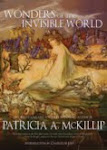It was appalling as to what occurred this weekend in Toronto with the many who attended for peaceful demonstrations, those who went to watch and report the events, and those who intended to wreck havoc upon those who represented authority: the police, banks, American franchised stores and businesses.

When there is civil unrest or unlawful activity in progress, the police are entitled to use as much force as necessary to stop those parties engaged in such activity. On Saturday I didn’t see much in the way of the police hampering the unlawful assembly of the supposed ‘anarchists’ and thugs dressed in black complete with hoods, masks and gloves to hide their identity while they engaged in damaging property. In fact, they allowed many of their police cars (7) to be burned to a crisp.

In essence, because of the liberal civil rights citizens have in this country, those demonstrators and agitators who attended in the financial district, Yonge, Dundas and Queen Streets, Spadina and Queen Streets of downtown Toronto were allowed to do what they did. The police did very little to quell the riots though they did protect the G20 attendees in their ‘fortressed area’. The police were entitled under the Criminal Code of Canada (“CCC”) (s.32(1)) to suppress a riot with as much force as they believe necessary. This section of the act also applies to citizens (s.32(4)) who witness or believe serious mischief will result in a riot or an ongoing riot. Citizens or witnesses can hold the offending party until a peace officer is available. The police in attendance on Saturday did not suppress the riots. On Sunday the police took action in rounding up protestors in various locations throughout the downtown area including those who happened to be in the crowd.
All citizens of Canada are expected to uphold the law and are bound by the articles in the CCC. These laws also apply to non-Canadians who reside here. The definitions for unlawful assembly (s.63) and riot (s.64) include those people participating in a lawful assembly who are incited by others to engage in a riot that “disturb the peace tumultuously”.
There are parties to an offense: those who commit it, those who aid, those who know about the offense but fail to do anything about it, combined with a common intention while knowing that to do so is unlawful; those who counsel another person to be a party (procure, solicit, incite). That is, those who committed the damage to private, municipal and government property have committed an offense, as have those who witnessed such offenses. Why did those in attendance who witnessed the unlawful acts do nothing to stop it? That would include bystanders, those protestors engaged in a lawful assembly, emergency service personnel and news reporters.
Those protestors that were rounded up and arrested on Sunday will allege there was police brutality including unwarranted treatment, and the lawyers they obtain to represent them will say the same. It’s amazing what people will do and say to avoid responsibility of their actions during a riot or unlawful assembly or anything unlawful.
It will be interesting to see if and when our liberal civil rights in Canada are taken away from us because of the apathy of its citizens.
The next G8 Summit is in France. I’m quite certain the French President knows exactly how to handle protestors who riot and at less cost.
For other participants for My Town Monday go here.
UPDATE: Those people who were arrested, detained and charged after the sweeps and confrontations made by the police were as the result of the enforcement of the Public Works Protection Act (1990), with Schedule I Ontario Regulations 233/10 being amended June 2, 2010 and published on the Ontario e-laws website on June 16, 2010. This Act was first enacted on September 22, 1939 shortly after the British Empire declared war on Germany. It is an obscure Act that is still in force, usually referring to hydro-electric stations and courthouses. An amendment was passed to cover the period June 14 to June 28, 2010 specifically for the G20 Summit meant as a preventative to protect the leaders, the public, the protestors and the police. Having the G20 Summit in Toronto was expected to attract a criminal element to the city as has occurred in other cities around the globe.
Two weeks ago I heard on the radio that anyone wanting to go near the security fence close to the area where the G20 Summit was being held would be expected to produce ID and a reason for being in that location to a police officer when requested. Also, if the person was requested by a police officer to leave the area they would be required to do so or face arrest. This was repeated daily and on numerous occasions throughout the day on the classical station I listen to. It's not as if this was a new law suddenly enacted at the last minute as if underhanded. I recall reading or hearing about this when it was first known that Toronto would be holding the G20 Summit, that security would need to be increased and that was some time ago.
Photos borrowed from Reuters News Service.





























































